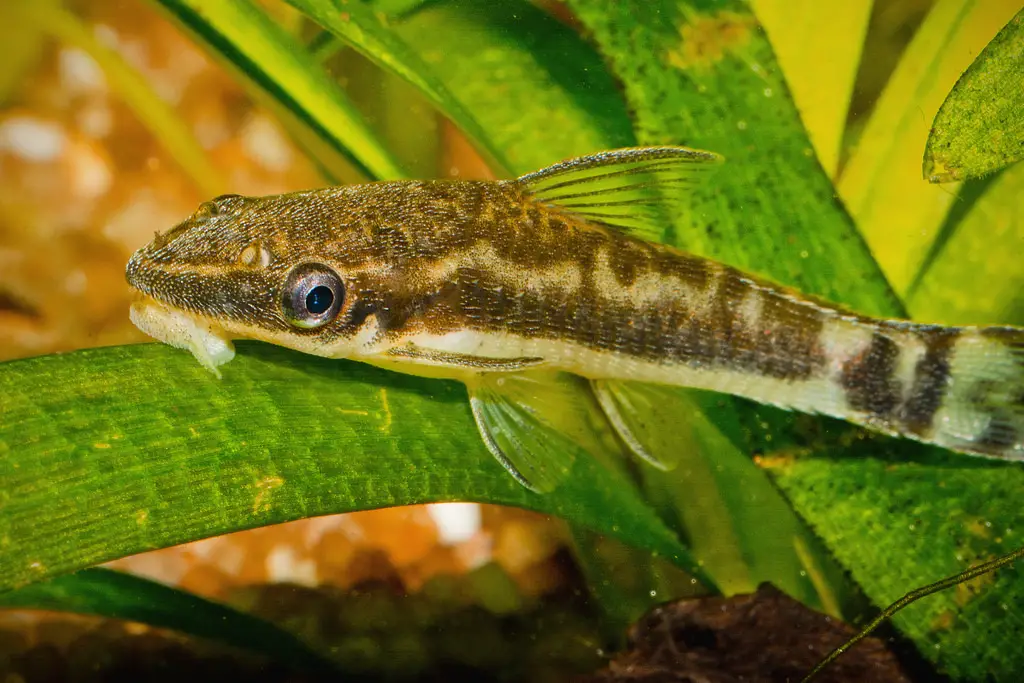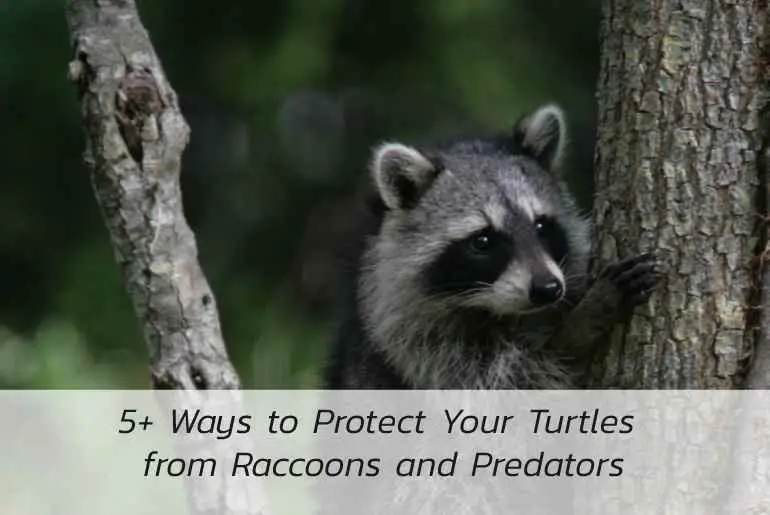If you’re like most people, then you’ve probably wondered at some point whether or not catfish eat turtles. It’s an interesting question and one that has a lot of different answers. In this blog post, we will explore all of the different ways that catfish and turtles interact with each other – both in the wild and in captivity. We’ll also provide some tips on how to keep your catfish and turtles living happily together!
Catfish are one of the largest freshwater fish, thanks to their diet. They are omnivores and will consume everything they find in their habitat, including turtles, if they encounter them. Some catfish even reach up to 6 ft in length and weigh over 200 pounds.
Catfish have become one of the largest freshwater fish due to their diet. They are omnivores and will consume everything they find in their habitat. Some catfish even reach up to 6 ft in length and weigh over 200 pounds.
Do Catfish Eat Turtles?
In short, yes. Catfish will eat turtles if they encounter them in the wild. This is because catfish are opportunistic feeders and will consume anything they can find. Turtles are a good source of protein and other nutrients, so they make a good meal for a catfish.
If you’ve ever had a pet turtle, you know how fun and interesting they can be to watch. Turtles are one of the oldest species of animals on Earth, and they come in all shapes and sizes. But did you know that turtles are also a favorite food of catfish? That’s right – catfish love to eat turtles, and they will often prey on them in the wild. There are several reasons for this.
First of all, catfish find turtles to be very nutritious, which helps them to grow to their large size. Secondly, catfish have to swallow their food whole, so when they encounter a turtle, they will often just swallow it down.
And finally, there have been some cases where catfish have been overambitious in their quest for a turtle meal. For example, there was one case of a 5-foot-long catfish trying to swallow an adult red-eared slider turtle – but the turtle was too big to fit wholly inside the catfish’s mouth!
So, if you’re ever thinking about getting a pet turtle, just be aware that you may also need to get a pet catfish to keep it safe from becoming someone else’s dinner.
Do Catfish Eat Baby Turtles?
Yes, catfish will eat baby turtles if they can find them. Baby turtles are very small and vulnerable, so they make an easy target for catfish. In addition, baby turtles don’t have the hard shell that adult turtles have, so they are even easier to swallow.
If you’re thinking about getting a pet turtle, you should also be prepared to get a pet catfish. Baby turtles are very small and vulnerable, so they make an easy target for catfish. In addition, baby turtles don’t have the hard shell that adult turtles have, so they are even easier to swallow.
When Can Catfish Eat Turtles?
Catfish can eat turtles at any time – there is no specific season or time of year when they will eat turtles. This is because catfish are opportunistic feeders and will consume anything they can find.
Catfish are fearsome predators that can grow to impressive sizes, making them a danger to any smaller creature that crosses their path. One of their favorite prey items is turtles, which they can consume whole thanks to their large mouths and sharp teeth.
Although catfish have shorter lifespans compared to turtles, they can still live for about 50 years. So, to get to the size where they can consume a turtle whole, they will need to be at least 10 years of age. And by then, they will be over 4 feet long and weigh over 100 pounds.
Turtles, on the other hand, have much longer lifespans and can live for over 100 years. This means that a turtle could potentially take vengeance on a catfish that tried to eat it when it was younger. However, it’s unlikely that a turtle would be able to take down a fully-grown catfish.
So, while turtles may have the upper hand in the long run, catfish are definitely the predators to watch out for in the meantime.
Can Turtles Eat Catfish?
Yes, turtles can eat catfish, but it’s not a common occurrence. This is because turtles are usually larger than catfish, so they will typically prey on smaller creatures.
There have been some cases where turtles have eaten catfish, however. For example, there was one case of an alligator snapping turtle that ate a 12-inch-long catfish.
It’s not clear why the turtle decided to eat the catfish, but it’s possible that it was just opportunistic and saw the catfish as an easy meal. Alternatively, the turtle may have mistaken the catfish for one of its usual prey items, such as a crayfish or fish.
Whatever the reason, it’s clear that turtles are capable of eating catfish if they want to. Some of the catfishes turtles may try to eat are:
- Cory Catfish
- Clown Pleco
- Glass Catfish
- Pictus Catfish
- Upside Down Catfish
- Striped Raphael Catfish
- Bumblebee Catfish
- Chinese Algae Eater Catfish
- Otocinclus Catfish
- Bristlenose Pleco
Can You Keep Catfish With Turtles?
Yes, you can keep catfish with turtles. However, you should be aware that there is a risk of the catfish eating the turtle. If you are going to keep them together, it is best to get a small turtle and a large catfish.
As I said, turtles will devour anything smaller and slower than them. This is why you need to put them with fish that share the same growth rate as them. For example, the striped Raphael catfish can be the ideal tank mate for a turtle. An adult Raphael catfish can grow anywhere between 7 to 10 inches in length.
This is near about the size of an adult red-eared slider or a yellow-bellied slider turtle. Not to mention, the Raphael catfish is also quite a speedy swimmer. So, if you’re looking for a potential turtle tank mate, the striped Raphael catfish should definitely be at the top of your list.
What Type Of Catfish Should You Keep With Turtles?
As I’ve mentioned, it’s best to keep a large catfish with a small turtle. This is because the turtle will be able to outgrow the catfish and won’t be at risk of being eaten.
Some of the best types of catfish to keep with turtles are:
Cory Catfish

Cory catfish are often kept as pets in home aquariums. They are peaceful, active bottom-dwellers that make a great addition to any fish tank. Corys are particularly fond of interacting with other fish and will often be seen “shoaling” or swimming in groups with other fish species.
One common question that pet owners have is whether or not it is safe to keep corys with turtles. The answer is yes!
Corys and turtles can make good tank mates as long as a few guidelines are followed. First, it is important to make sure that the turtle is not large enough to eat the corys. Second, the water conditions in the tank must be suitable for both turtles and corys.
Lastly, provide plenty of hiding places for the corys so they can escape if needed. When these guidelines are followed, cory catfish and turtles can coexist peacefully in the same aquarium.
Clown Pleco
The clown pleco (Panaque maccus) is a tropical freshwater fish that is native to South America. It is a popular aquarium fish due to its unique appearance and peaceful nature. Clown plecos grow to be about six inches in length and have a lifespan of five to eight years.
Clown plecos are brown or black in color with white spots all over their body. They have a long, fleshy “beard” that hangs from their chin. This beard is used to help the clown pleco eat algae and other food items.
Clown plecos are relatively easy to care for and make a great addition to any aquarium. They are peaceful fish that get along well with other tank mates. One question that many aquarium hobbyists have is whether or not clown plecos can be kept with turtles.
The answer is yes! Clown plecos and turtles can coexist peacefully in the same aquarium as long as a few guidelines are followed.
Otocinclus Catfish

Otocinclus catfish are small, peaceful freshwater fish that originate from South America. They are a popular addition to many home aquariums due to their algae-eating habits and relatively easy care requirements. Otocinclus catfish grow to be about two inches in length and have a lifespan of three to five years.
Otocinclus catfish are brown or black in color with white spots all over their body. They have a long, fleshy “beard” that hangs from their chin. This beard is used to help the Otocinclus eat algae and other food items.
Bristlenose Pleco

Bristlenose pleco is one of the easiest catfish to raise due to its ability to feed on any kind of food. They are also excellent scavengers and will help keep your tank clean. However, once your turtle grows bigger than the bristle nose, it will attack and eat the pleco without hesitation. Such is the way of nature.
Therefore, you need to remove the fish from the tank and keep them separate if you want them alive and well. Turtles are the champions of making a mess in the tank, so you need to be prepared for some extra cleaning if you want to keep both animals in the same space. But if you’re up for the challenge, turtles and bristlenose pleco can make for a fun and interesting aquarium.
Plecos With Turtles
Plecos and turtles are both popular choices for aquarium pets. Both are relatively low-maintenance animals that can provide hours of enjoyment. However, there are a few key differences between the two.
Turtles are typically larger than plecos and have a hard shell that needs to be regularly cleaned. In contrast, plecos are smaller and have a suckermouth that they use to attach to rocks and other surfaces.
They also have a respiratory system that allows them to breathe oxygen from the water.
As a result, turtles require more frequent water changes than plecos. When choosing between a turtle and a pleco, it is important to consider your own lifestyle and the size of your aquarium.
Final Words On Catfish And Turtles
Catfish and turtles can make for a fun and interesting aquarium. However, there are a few key differences between the two. Turtles are typically larger than catfish and have hard shell that needs to be regularly cleaned. In contrast, catfish are smaller and have a suckermouth that they use to attach to rocks and other surfaces.






